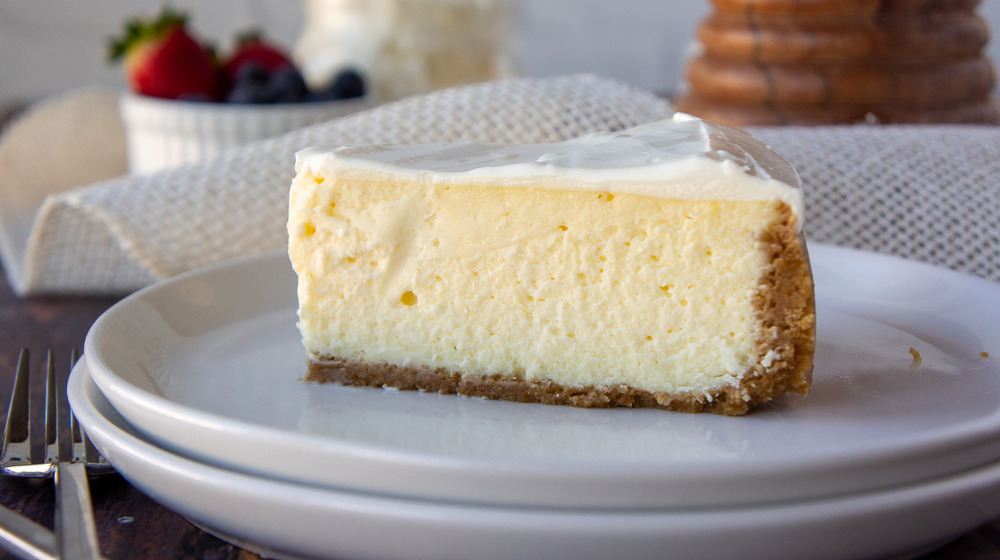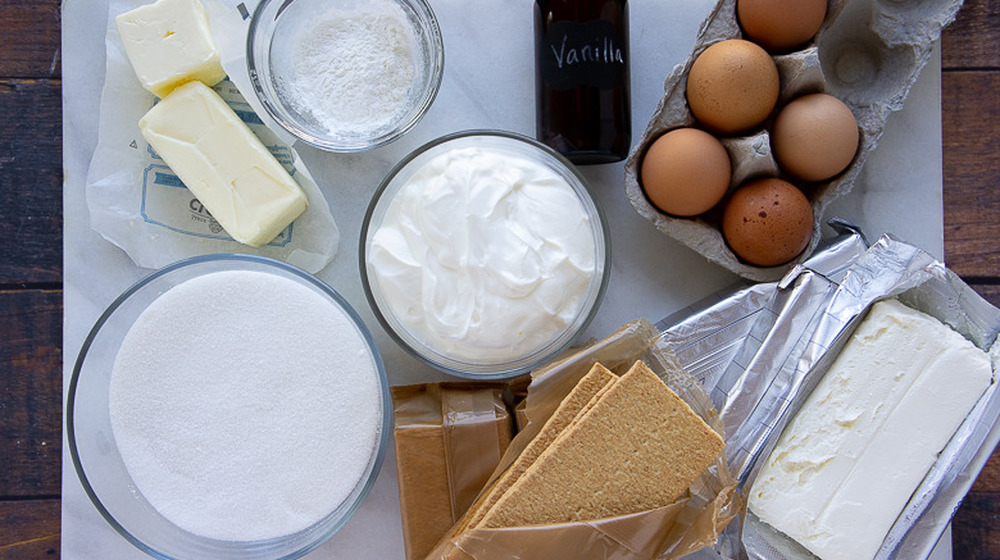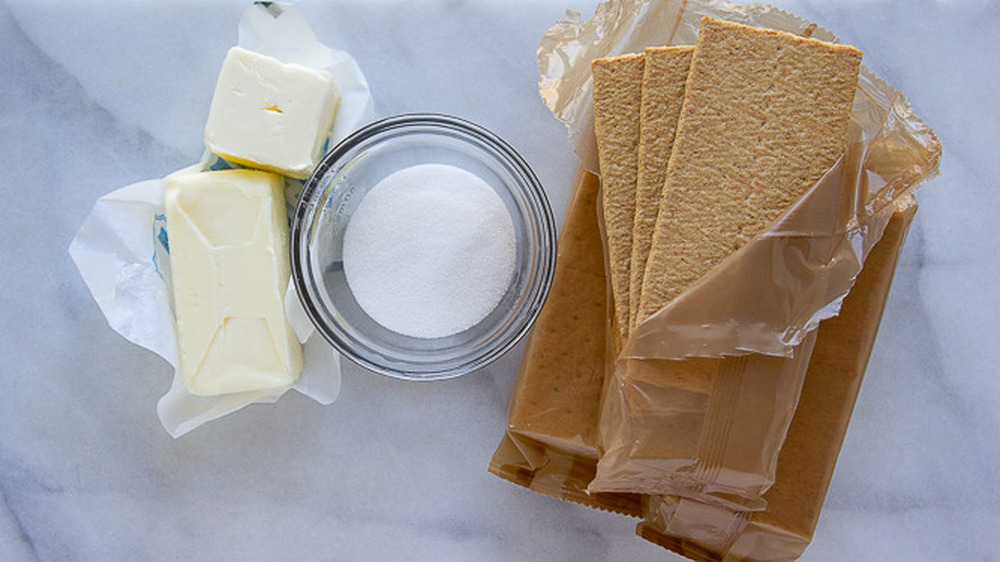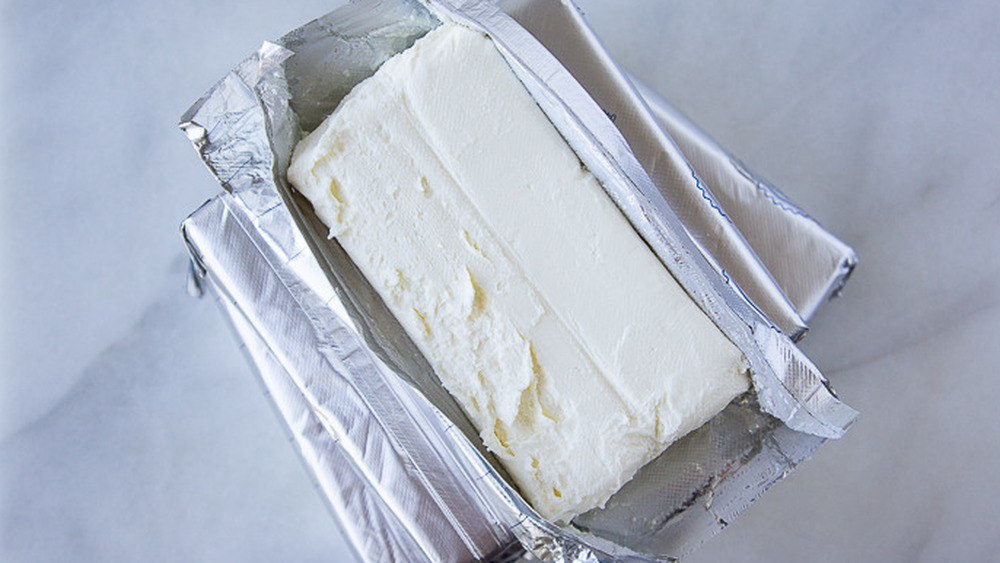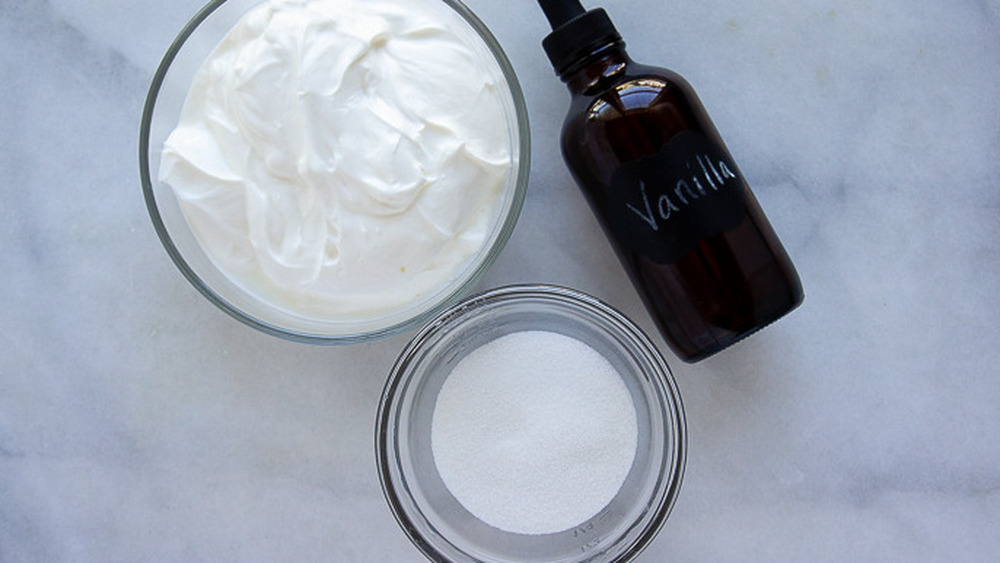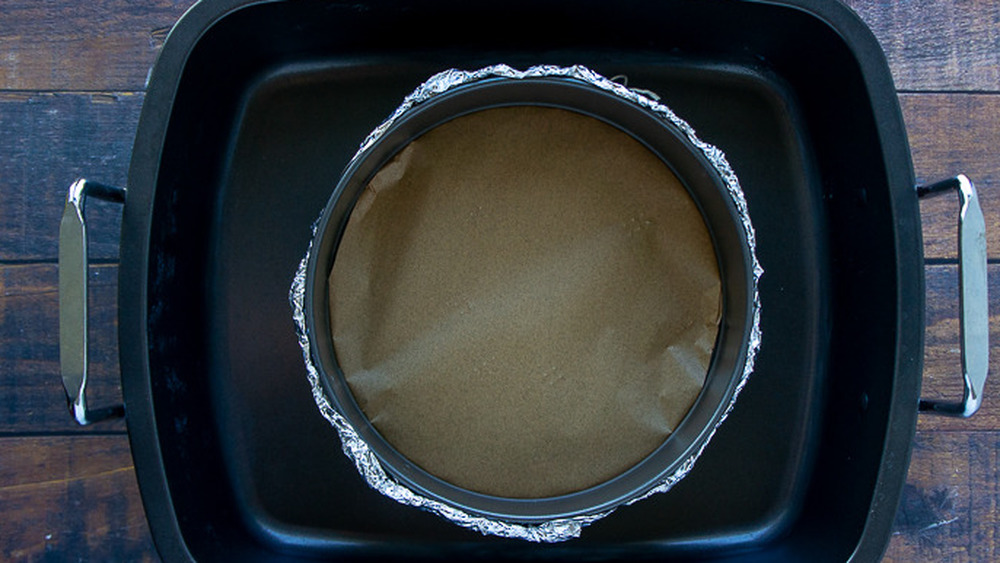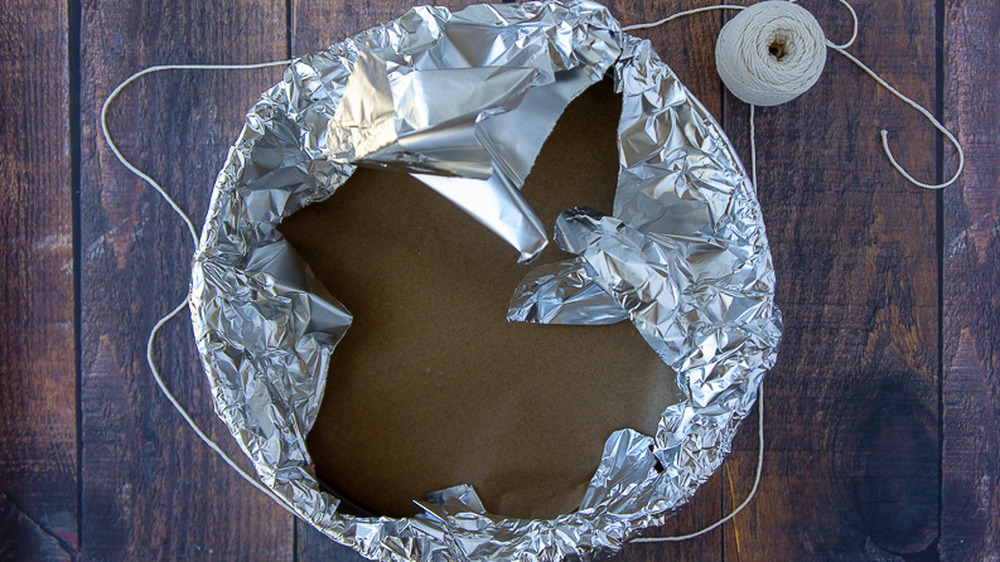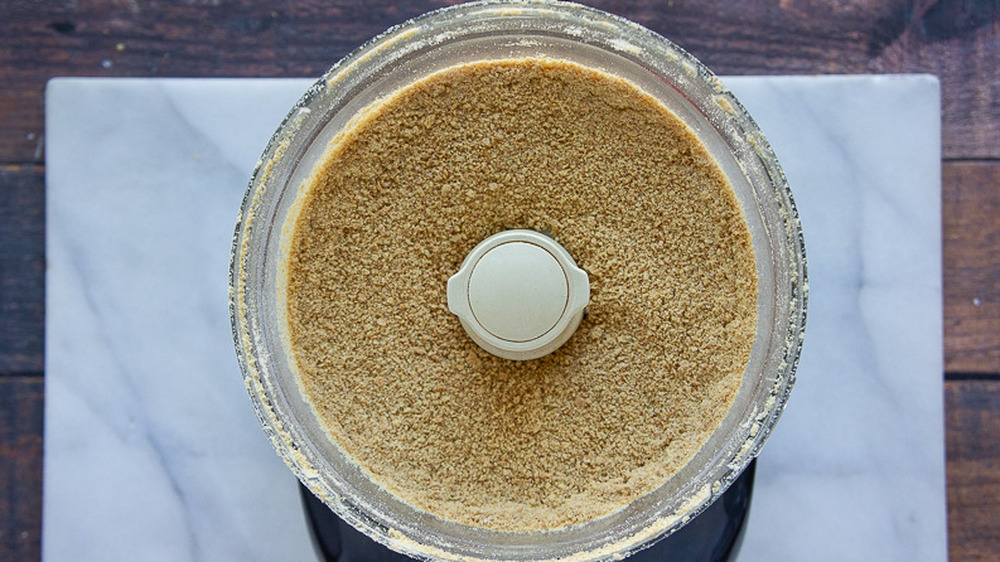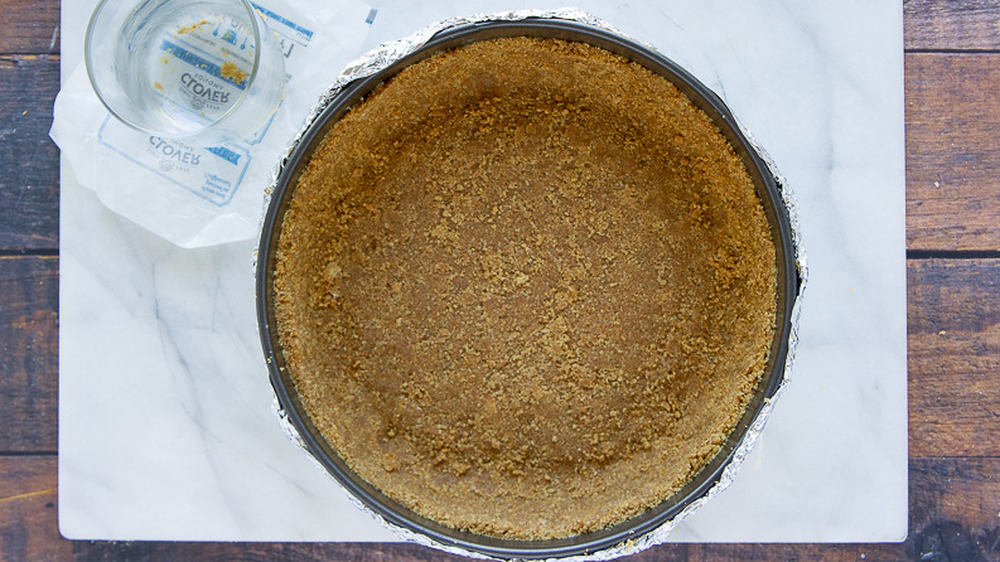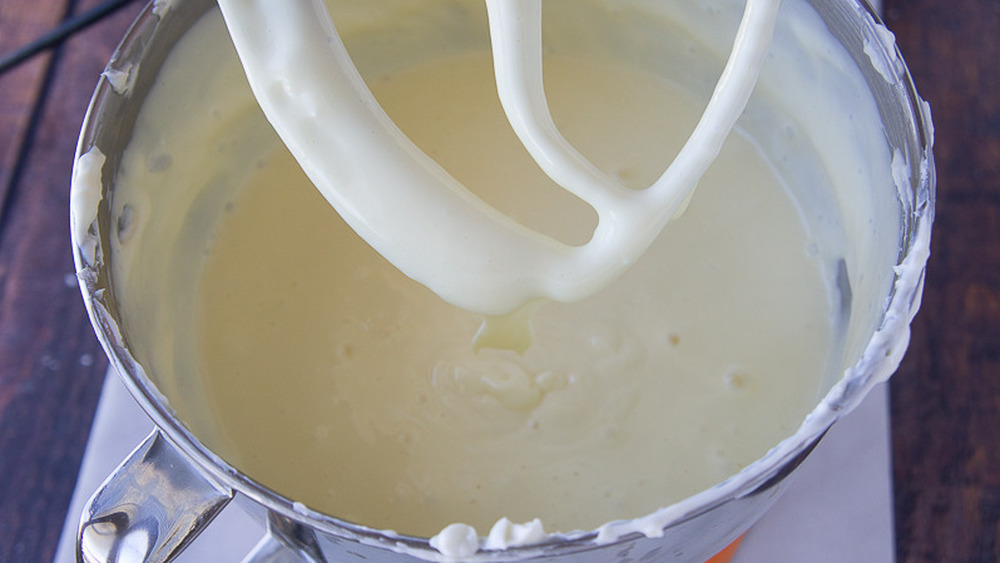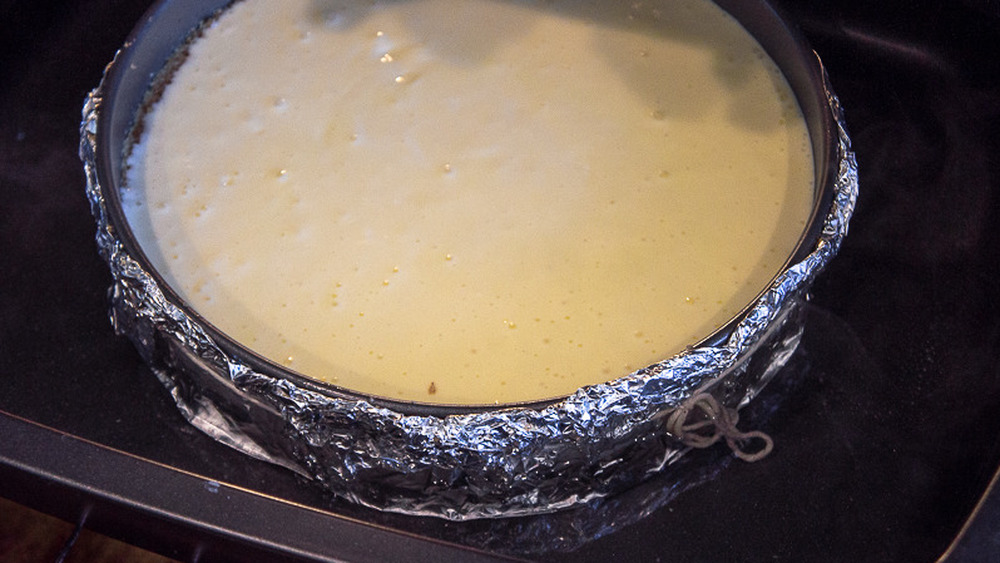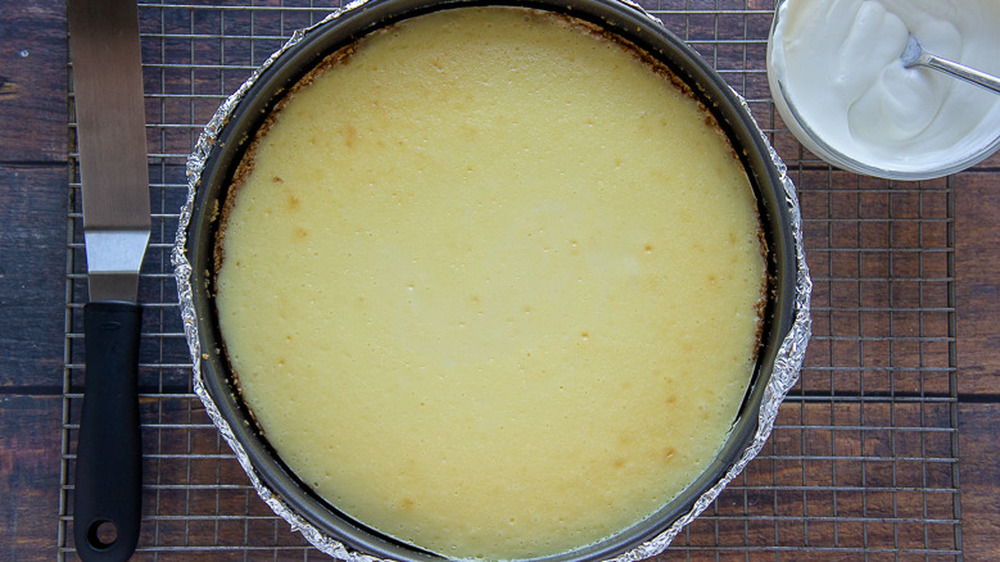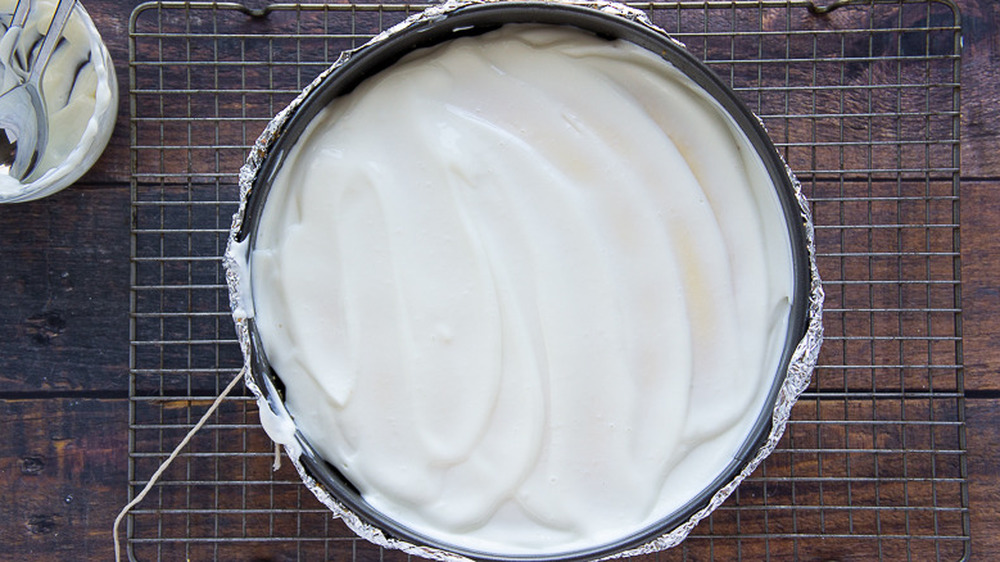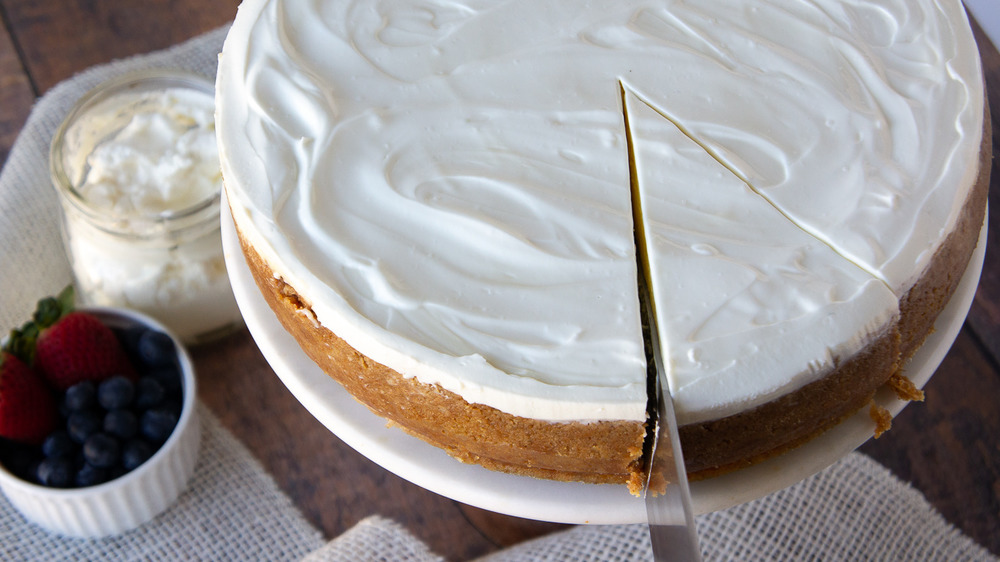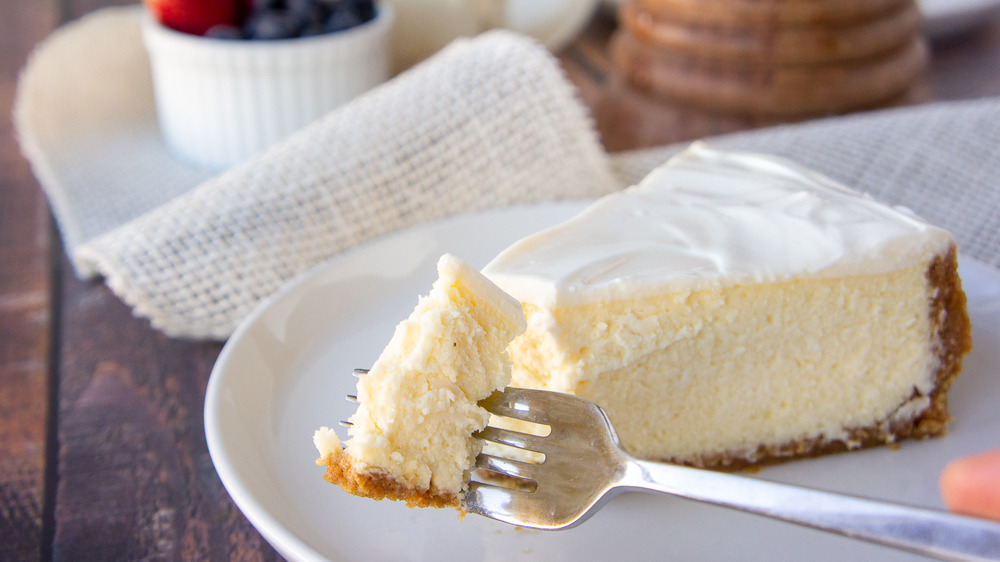Copycat Cheesecake Factory Cheesecake Recipe
We all know the temptation of a creamy, silky vanilla cheesecake, especially when we've finished our meal at The Cheesecake Factory. How does anyone ever resist?
What if we told you though, that you didn't need to wait until your next meal out to have that perfect slice? We've created a copycat Cheesecake Factory cheesecake recipe that will knock your socks off with its dreamy creaminess and fantastic vanilla flavor.
Baked in a classic graham cracker crust and topped with that iconic sour cream layer, this copycat recipe is as close a home baker can get to the original — and it's pretty close! Don't wait any longer to satisfy that cheesecake craving — instead, get baking and have a beautiful classic vanilla cheesecake cooling on your counter today. We promise, you can have as many slices as your stomach desires. This is a judgment-free zone!
What it takes to make a copycat Cheesecake Factory vanilla cheesecake
You may be surprised to discover that it doesn't take a lot of different ingredients to make a copycat Cheesecake Factory cheesecake. The crust, filling, and topping use just eight ingredients to create the perfect slice.
It all begins with that iconic graham cracker crust — they keep it simple, so we did too. It's just three ingredients to get your crust in the pan. A blend of cream cheese, sour cream, eggs, and sugar build a creamy, perfectly sweetened baked cheesecake.
That sour cream swirl on top? Just three ingredients you've already used and a whisk bring it together.
As a quick bonus tip, we suggest you hold onto that butter wrapper after you've melted it, it comes in handy later!
Graham crackers are the perfect beginning for this copycat Cheesecake Factory cheesecake
Truth be told, there are TONS of ways to make a delicious crust for a cheesecake. Nuts, vanilla wafers, crushed up cookies, the options are so vast and so good! But for this Cheesecake Factory copycat, we're going pure classic all the way, and that is always graham crackers.
The perfect crumb texture and the nutty, sweet flavor that comes from graham flour make for an ideal crumbly, cookie-like base to contrast the sweet soft vanilla cheesecake. It takes just graham crackers, butter, and sugar (and a pinch of salt we suggest) to make this classic crust.
Creamy, rich baked vanilla cheesecake filling
A baked cheesecake can be made in many different ways, but to mimic the classic from the Cheesecake Factory we knew we wanted to make a filling with lots of cream cheese and whole eggs. There's no skimping allowed here, you'll need five full bricks of full-fat cream cheese to make this copycat perfect. Philadelphia cream cheese or whatever is your go-to choice will work.
It's the blend of that cream cheese with sour cream and plenty of pure vanilla extract that creates a tangy, luscious base for the filling. We add just the right amount of granulated sugar to balance that and five whole eggs to create the creamy, rich smooth texture we want. We don't suggest powdered sugar, but if you'd like, cane sugar would work.
Want the secret to no cracks in your cheesecake? We use just a few tablespoons of cornstarch here to help your cheesecake come out smooth and creamy every time. If necessary, use plain white flour instead.
That tangy, thin layer of sweet sour cream
It wouldn't be a good Cheesecake Factory copycat recipe without that pure white layer of tangy sour cream swirled across the top of the baked cheesecake. It looks beautiful, tastes delicious, and thankfully, it's ridiculously easy to make.
Just sour cream, vanilla, and sugar come together to make this, and in only two or three minutes at that. We won't be mixing this up until long after our cheesecake is in the oven, but for best results, pull the sour cream out of the fridge when your cheesecake begins to cool. This makes whipping it up easy!
The first steps to copycat Cheesecake Factory vanilla cheesecake bliss
Start by bringing all of your ingredients out of the fridge and onto the counter. Softened cream cheese and room temperature eggs and sour cream will help your cheesecake bake more evenly and smoothly.
We also need to create the right environment for baking a cheesecake. We'll be using a Bain-marie to bake this cheesecake, meaning a hot water bath. This is a gentle, even way to cook something like cheesecakes or custards, and produces fantastically creamy results.
To do this, we'll need a large pan to set our springform pan in, like a turkey roaster. You'll also need a 10-inch springform pan.
Prepping the springform pan and the oven
To prevent water from seeping in and making a soggy mess of our cheesecake, it's really important to cover up the seams of the springform pan. We also want to use a bit of parchment to make removing the bottom of the pan easier.
Simply cover the bottom circle with parchment and close the ring around it, pulling the parchment taut. Then trim the excess around the edges where it sticks out between the base and the ring. Then, cover the outsides. It takes two large, unbroken sheets of foil that come well up the sides of the springform pan to cover it properly. Make sure the sides are well covered, and if desired, use a piece of kitchen twine to tie around the rim to keep the foil tight against the sides.
Once your pan is wrapped, get your oven to 425°F and place the empty roasting pan on the middle rack. We'll also need a pot of hot water. An average household tea kettle held the perfect amount for us. You'll want enough to fill the roasting pan, or the pan you're baking the cheesecake in, with enough water to come halfway up the sides on the springform pan. Once prepped, you're ready to cook.
Creating the perfect crumbly crust for this copycat Cheesecake Factory cheesecake
To make the base, you'll need a food processor, blender, or a plastic bag and a rolling pin. We want to crush 2 tablespoons of sugar with all of the graham crackers until they resemble an even, small coarse crumb. Be sure not to process them too far and turn them into dust.
The sugar crumb mixture gets combined with ¾ cups of melted butter; that's 1 and ½ sticks, unsalted. With a fork or a silicone spatula stir the crumbs around until all the butter has been absorbed and all the crumbs are moistened. They should clump when you pinch them together, but not seem too wet or greasy. If they do, you can create more crumbs and add them a tablespoon at a time to absorb any excess.
Molding the cheesecake's crust into the pan
Dump the crumbs into the pan and use your fingers to press them down into it. To create the perfect Cheesecake Factory copycat, we're after a thin layer on the bottom and sides.
The original Cheesecake Factory cheesecake has a crust that comes up about three quarters of the cheesecake. To replicate this, only press the crumbs halfway up the pan — the cheesecake filling will not come up to the rim of the pan.
Once you have it even, take that butter wrapper you saved and use it to coat the bottom of rounded glass. Then use the buttered glass to press the crumbs firmly into the bottom and sides. Pause and use your knuckle to really press the crust into the bottom edge, then repeat, until a solid, well packed crust is formed. Stick it in the freezer while you move to the filling.
Get the mixer on, it's time for the cheesecake filling
Either a stand mixer with the paddle attachment or a good hand mixer really comes in handy here. Start by creaming the cream cheese and sour cream together. Once smooth, add in the cornstarch, vanilla, and sugar and beat the mixture on low for a minute or two. Pause to scrape down the sides and the beater, and then repeat, until everything is smoothly combined.
Beat the eggs together in a separate bowl, then, with the mixer running on low, begin adding them in. Do this slowly but steadily, and once it's all been added, pause to again scrape down the sides and bottom with a silicone spatula.
Mix until smooth and pour it into the prepared crust.
Pop that copycat Cheesecake Factory cheesecake in the oven
Once the filling is in, we need to knock some of the bubbles out, or they'll appear on the surface of our final baked cheesecake. To do this, just gently drop the springform pan on a firm, sturdy surface — like your kitchen counter. No more than an inch or two off the table, and firmly enough to see the bubbles rise to the surface, repeat two or three times.
Then carefully open your oven, and gently set the springform pan into the middle of the preheated pan.
Next pour in the hot water. Be very careful not to splash up the sides or over the edge of the springform pan. Pour the water in a slow steady stream near the edge of the pan, until it comes up halfway on the springform pan.
Close the oven, and bake for 15 minutes. Then drop the temp to 350°F and bake for another 55 minutes.
Check for doneness in the cheesecake and let it cool
When the timer goes off, check your cheesecake by looking for the jiggle in the middle of it. The size of the spot that still wiggles just slightly when you agitate the pan should be no bigger than a large orange. If it is, put it back in to bake in five-minute increments.
If that center spot is the right size, turn off the oven and crack the door a couple of inches. Let the cheesecake cool right where it is for 30 minutes. This further prevents cracking and helps the cheesecake set perfectly.
After that initial cool down period, remove the springform pan carefully from the water and onto a towel-lined cooling rack. Carefully remove the foil and let it cool on the rack.
Add the cheesecake's sour cream layer for the final chill time
Once the cheesecake is cooling on the rack, go ahead and make the sour cream layer. This really just takes a bowl, a whisk, and three ingredients.
Whisk the sour cream, all the remaining sugar, and vanilla extract together until it's smooth, and then add all but one-third of it to the top of the cooling cheesecake. Reserve that little bit for touch-ups later, as the topping will thin in some spots as it settles. Smooth it on in an even layer, then use the back of a spoon or a small offset spatula to create a swirled pattern.
Then, once the pan is completely cool to the touch on all sides and the bottom, transfer the springform pan to the fridge. Do not unmold it yet.
Let it chill for at least two hours before serving. Once it's chilled, you can look at the top and see if any of the cheesecake is peeking through the sour cream. Go ahead and touch it up now.
Unmolding and serving a perfect Copycat Cheesecake Factory Cheesecake
To unmold a cheesecake, first use a thin offset spatula or knife to gently separate the crust from the pan. Then unlatch it and remove the outer ring. You may wish to use a spatula to clean up the edges for appearance purposes.
If you'd like to transfer it off of the bottom disc, you can use a long offset spatula to wiggle between the parchment and the pan. Use a few sturdy spatulas or a thin metal pizza peel to lift the cheesecake off of it and onto your desired platter. The cheesecake is HEAVY so be careful doing this, it's totally fine to leave it on the base!
When you're ready to slice, get a tall container of hot water ready, and place a sharp metal knife in it. Once the knife is warm, wipe it dry carefully and slice into the cheesecake. Repeat for each slice. This comfortably serves 12 to 15 people!
A gourmet classic cheesecake, from your home oven
Once you take that first bite of decadent cheesecake baked into a thin, buttery graham cracker crust, you'll be sold on making it yourself. No need to share a slice to cut the bill down, feel free to have a big one all to yourself.
The best news is that if you're not baking for a crowd of 12, you can definitely enjoy this for many days to come. In the fridge, covered, it keeps for four to five days. But in the freezer, it will last for three months. Simply freeze the slices on a baking sheet first, then transfer to an airtight container.
Whether you're enjoying a thawed slice from the freezer, or a slice from this weekend's bake, once the cheesecake has been chilled for more than four hours, for optimal creaminess it's best to let it sit at room temperature for 20 minutes before eating.
Recipe Card
Cheesecake Factory is known for its decadent cheesecake and now you can recreate it at home. This recipe delivers tangy flavor and best of all, there's no bill!
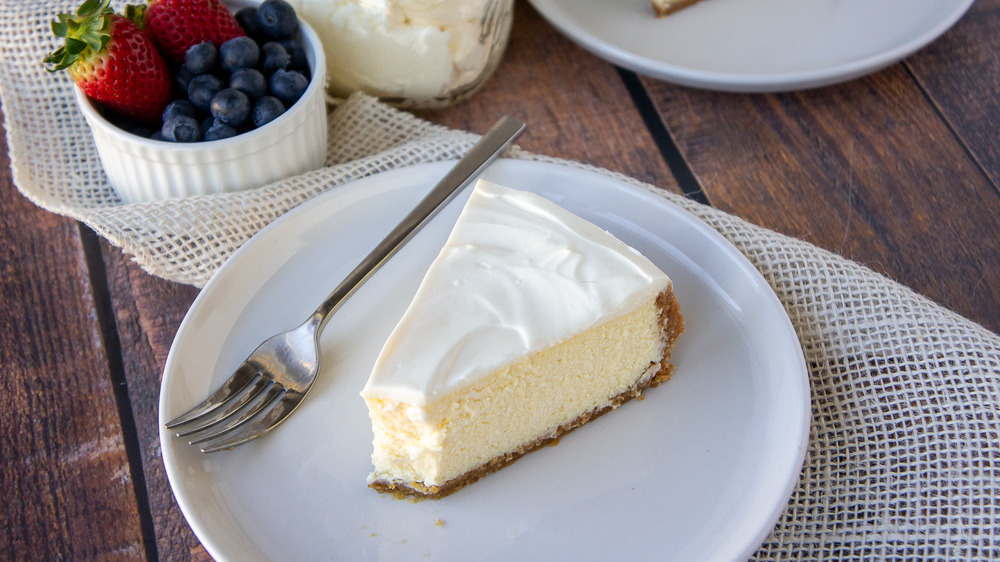
Ingredients
- 20 graham crackers
- 3/4 cups butter, melted
- 5 8 ounce blocks full fat cream cheese
- 1 1/2 cup sour cream
- 4 teaspoons vanilla extract
- 1 3/4 cups + 1 tablespoon sugar
- 5 large eggs
- 2 tablespoons cornstarch
Directions
- Preheat oven to 425°F and place large roasting pan on the middle rack. Put kettle of water on to heat.
- Line the inside bottom of a 10-inch springform pan with parchment paper, trimming it to fit. Then, cover the outside bottom and sides of a 10-inch springform pan with a double layer of foil, be sure the foil layers are large, unbroken pieces to prevent water from seeping into the pan. You can also tie a piece of kitchen twine around the foil for added security.
- Place all the graham crackers and 2 tablespoons of sugar into the bowl of a food processor and pulse until they resemble crumbs.
- Dump into a bowl and pour in the melted butter. Mix until moistened completely, then dump into the springform pan.
- Press the crumbs evenly along the bottom and halfway up the sides of your springform pan. Be firm and really pack it together.
- Use a lightly greased smooth bottomed glass to help press it tightly in. Make the sides as thin and even as you can, a mere 1/4 inch, and trim any scraggly top edges for a straight line. Place in the freezer to chill while you prep the filling.
- Beat softened cream cheese and 1/2 cup of sour cream in a large bowl until smooth, just 2 to 3 minutes.
- Add the cornstarch, 1 1/2 cups sugar, and 3 teaspoons of vanilla and beat on low to combine, pausing to scrape down the sides as needed.
- Beat the eggs together lightly in a separate bowl, then with the mixer running at its lowest speed, slowly add the eggs. Once the eggs are mostly incorporated, pause to thoroughly scrape the sides and bottom of the bowl, then beat again on medium-low until very smooth, just 1 to 2 minutes.
- Pour into the chilled crust and lightly drop the pan on a firm surface to knock out any bubbles. Place in the middle of the preheated oven and carefully pour the hot water from the kettle around the springform pan. Be sure not to splash water over the edges or top of the pan. The water should come halfway up.
- Bake for 15 minutes, then drop the oven temperature to 350°F and continue to bake for 55 to 65 minutes, or until only a spot in the middle the size of a large orange is slightly wobbly.
- Turn off the oven and crack the door, allowing the cheesecake to cool in the oven for at least 30 minutes. The pan should be okay to touch with your bare fingers before you try to remove it.
- Carefully lift out of the water and move to a towel-lined cooling rack. Remove the foil carefully and allow the cheesecake to cool for another 1 to 1.5 hours on the countertop.
- Prepare the topping by mixing the remaining sour cream, sugar, and vanilla together with a whisk. Spread 2/3 of the mix evenly over the top of the cooling cheesecake. Reserve remaining topping for touch-ups.
- Once the pan is completely cool to the touch, transfer it to the fridge to cool for at least 4 hours. Before serving, touch up any spots you can see through the topping.
- Unmold and run a thin spreader or knife around the inside rim of the cheesecake. Carefully lift away the springform.
- If desired, run the thin spreader between the parchment and the bottom of the springform pan, then carefully place it on a serving platter.
- Allow to come up to room temperature for 20 minutes, then use a hot knife to slice and serve.
- Store any leftovers covered in the fridge for up to 5 days.
Nutrition
| Calories per Serving | 737 |
| Total Fat | 54.0 g |
| Saturated Fat | 29.9 g |
| Trans Fat | 0.5 g |
| Cholesterol | 226.9 mg |
| Total Carbohydrates | 54.5 g |
| Dietary Fiber | 0.8 g |
| Total Sugars | 40.1 g |
| Sodium | 497.2 mg |
| Protein | 10.5 g |
